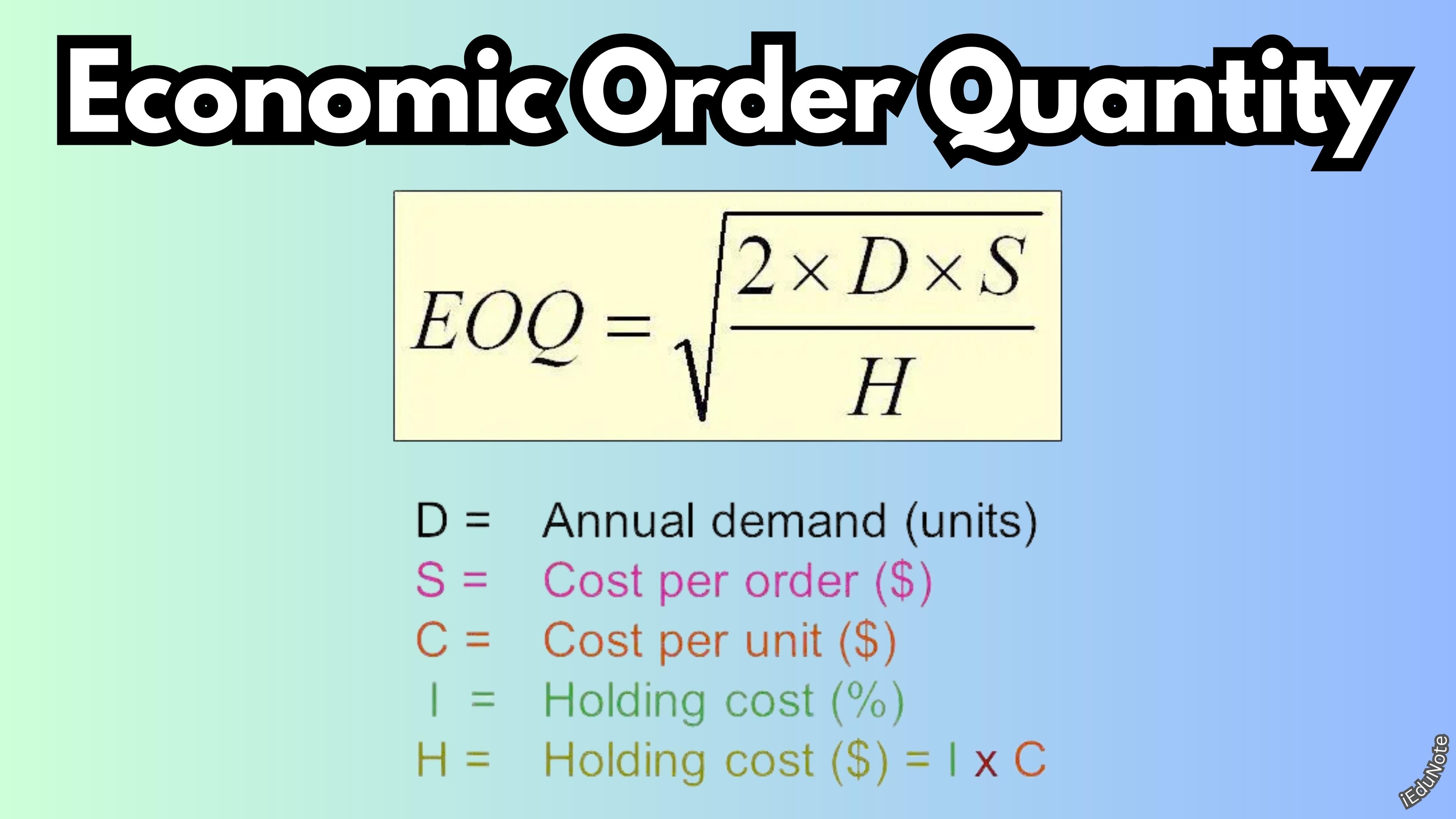The economic order quantity (EOQ) is the purchase order’s size, giving maximum economy in purchasing material. It is also termed a standard order quantity.
The concept of Economic Order Quantity or EOQ emerged from this behavior of carrying and ordering costs.
EOQ is the quantity fixed at a point where the total cost of ordering and the cost of carrying the inventory will be the minimum. EOQ may be arrived at by the tabular method by preparing purchase order tables showing the ordering cost.
Economic Batch Quantity
Economic batch quantity, “optimal batch quantity,” or economic production quantity, is a measure used to determine the number of units produced at minimum average costs in a given batch or production run.
Economic Production Quantity model is an extension of the Economic Order Quantity model. The.
The economic Batch Quantity model, or production lot-size model, is similar to the EOQ model in that we are attempting to calculate an optimum for the batch quantity we must produce.
Economic batch quantity, “optimal batch quantity,” or economic production quantity is a measure used to determine the number of units produced at minimum average costs in a given batch or production run.
Economic Production Quantity model is an extension of the Economic Order Quantity model. The Economic Batch Quantity model, or production lot-size model, is similar to the EOQ model in that we are attempting to calculate an optimum for the batch quantity we must produce.
Economic Batch Quantity = EBQ = V2AS/C
Where A = Annual Demand,
S = Setting up the cost per batch,
C= Carrying cost/unit of production.
Economic Order Quantity Formula
Economic Order Quantity is Calculated by;

Economic Order Quantity Elements
Carrying cost and total cost of various sizes of purchase orders can be established by algebraic equation or by the graph. It is fixed after taking into consideration the following points:
Ordering Cost
The cost of placing an order refers to the cost incurred for acquiring materials. It depends upon the number of orders placed and the number of items ordered.
If the order size is larger in quantity, the order placing cost per unit is lower. Suppose the order size is smaller in quantity. In that case, the order placing cost per unit is higher: It includes the cost of preparing and placing an order, the cost of transportation, cost of receiving and inspecting the materials.
Carrying cost
It is the cost incurred in maintaining a given stock level. It includes the cost of handling materials, insurance premium, cost of storage space, obsolescence losses, etc., the larger size of stock, higher stock carrying cost per unit per annum, and vice versa.